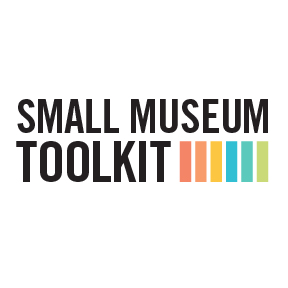Carol Bolton Betts, editor for the
Illinois Heritage Association, wrote an overview of The Small Museum Toolkit as
part of the IHA’s Technical Insert series.
The IHA has graciously allowed The Small Museum Toolkit to share this
introduction in seven blog posts during July and August. The posts will help
you to get to know about the content of the Toolkit from an outside
perspective.
Museum collections that yield artifacts for exhibits and other
programs require care that conserves their physical integrity. The final volume
in The Small Museum Toolkit is devoted to this topic.
In chapter 1 Scott Carrlee introduces collections care basics. He
notes that every museum should have the goal of creating an environment that
“promotes collections care rather than allowing preventable damage to occur”
(2). Carrlee divides his essay into six sections, each of which addresses a
threat to collections: climate, light, pests, pollutants, human interaction,
and disasters. He takes a rational approach to each section, identifying or
defining the threat and discussing how it impacts collections. He briefly tells
what museum staff can do about the threat and offers a checklist of preventive
conservation strategies. Each section concludes with a brief segment of FAQs.
This crisp manner of summarizing the basic information makes it easy to grasp
each point.
Chapter 2 takes an interesting turn. In it Bruce Teeple discusses
historic structures and landscapes, which relates to the idea put forth in book
3 that the museum building is an important artifact. He says that collections
inside the museum may be well conserved, but a dilapidated exterior or
neglected grounds will send the wrong signal to visitors. An important part of
his discussion centers on the historic structure report and the drafting of an
action plan for historic structures and landscapes. He tells where responsibilities
lie in documenting and carrying out the conservation of both building and
grounds.
In chapter
3 Patricia L. Miller gives a thorough account of the principles of collections
management and the techniques involved. As in so many museum practices, collecting
begins with an organization’s purpose and mission. Miller advises creating a
collections management policy and a collecting plan, the latter of which sets
forth things such as collecting goals and how they will be reached. She
discusses standard procedures for acquiring artifacts (or deaccessioning them
when necessary) and establishing ownership; how to assign numbers to objects,
mark them, and catalog them; and where responsibility should be assigned for
each operation. This chapter’s textbox outlining unacceptable marking methods
and materials will clear up many misperceptions on those topics, especially in
small institutions without trained staff. Chapter 4 of book 6 amplifies points
discussed in the preceding chapter: why a good collections management policy
(CMP) is needed, and what constitutes such a policy. At the center of Julia
Clark’s discussion is a summary of key elements covered in a CMP: the
introduction; scope and categories of collections; acquisitions and accessions;
deaccessions and disposal; loans; collections care; access and use; image use;
and ethics. She also notes additional considerations, such as those warranted
for special types of collections, including archaeological artifacts, objects
from endangered species, items of Nazi-era provenance, and Native American
human remains, grave goods, and ceremonial objects. In the end Clark advises on
setting a regular schedule for review of the CMP, and revising it where needed.
Nicolette B. Meister and Jackie Hoff write in chapter 5 about collections
planning and stewardship. Collections planning involves identifying actions
that will enable a museum to accomplish its collecting goals and allocate
resources to advance the museum’s mission. It encompasses analysis of existing
collections; it is outcome oriented and limited to a set time period. The
authors stress that maintaining intellectual control of a museum’s collections
is a primary purpose of collections planning. They give the components of a
collection plan, provide a sample outline of such a plan, and take the reader
step by step through the process of creating a plan. They also list useful tips
for collections planning and stewardship aimed at small museums.
Conservation
planning is the topic of the last chapter in book 6. Julie A. Reilly describes
the goals of museum conservation as preserving and protecting artifacts;
minimizing physical damage to collections by preventive care and conservation
treatments; maintaining the significance of objects along with contextual
information about them; and avoiding interference with the material state of
the objects. She advises completing a conservation assessment and then
selecting an assessor or conservator. The assessment should lead to the
development of a long-range conservation plan and should dovetail with a
condition survey, which examines objects for special conservation needs. Reilly
explains how to prepare a survey form, which should contain identifying information
about each artifact. Prioritizing need for treatment is next. The treatment
itself marks the end of the entire process. One of Reilly’s textboxes neatly
summarizes the conservation planning process.
Adapted
from Carol Bolton Betts, “An
Introduction to The Small Museum Toolkit,”
Illinois Heritage Association, Technical Insert 177 (May-June 2012). As a
volunteer, Ms. Betts has done editorial work for the Illinois Heritage
Association (illinoisheritage.org) since 1982. She was an editor at the
University of Illinois Press for twenty years, working primarily on books about
art and architecture, film, women’s history, and subjects related to the
history of Illinois. Earlier she served on the staff of the Philadelphia Museum
of Art and taught art history at Villanova University and at California State
University–Los Angeles.
 Wishing you the happiest of holidays and thank you for all the good work you did in 2012! Now it's time to rest, catch up with friends and family, and re-charge your batteries for an even better 2013.
Wishing you the happiest of holidays and thank you for all the good work you did in 2012! Now it's time to rest, catch up with friends and family, and re-charge your batteries for an even better 2013.

